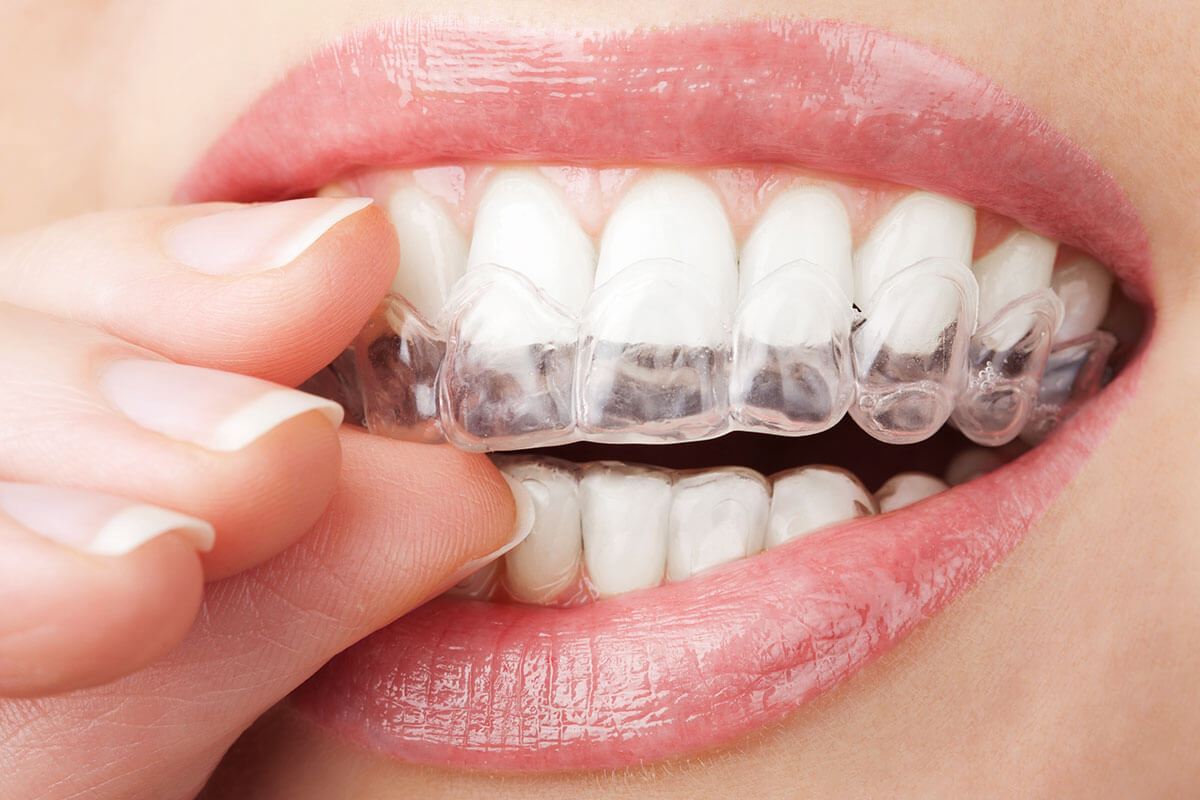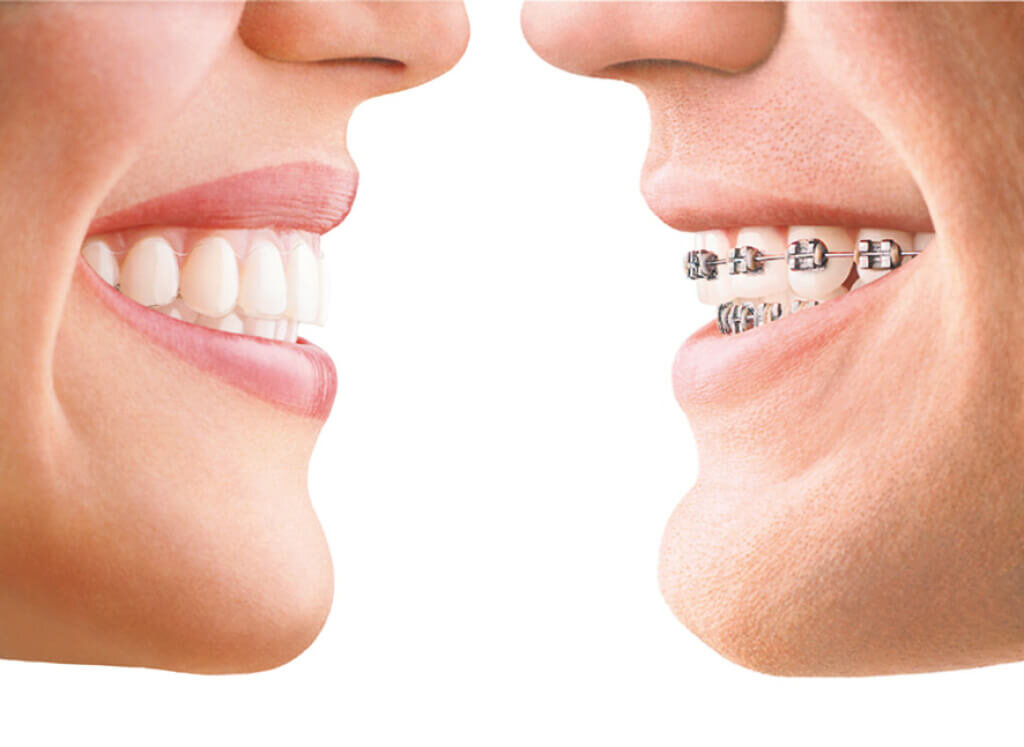Discover the Conveniences of Invisalign for a Perfect Smile Makeover
Discover the Conveniences of Invisalign for a Perfect Smile Makeover
Blog Article
Invisalign vs. Standard Dental braces: Which Alternative Is Right for You?
When taking into consideration orthodontic treatment, the option between Invisalign and conventional braces provides numerous crucial factors that merit careful evaluation. Invisalign provides a very discreet choice with detachable aligners, while conventional dental braces offer a much more visible yet effective solution for severe imbalance.
Introduction of Therapy Alternatives

In contrast, traditional braces contain steel braces and cords that are bonded to the teeth. This approach applies constant stress gradually to attain positioning. While effective for complex orthodontic problems, traditional braces need routine check outs for adjustments and can pose challenges in keeping oral hygiene as a result of the problem of cleaning around braces and wires.
Both options have their advantages, and the selection commonly depends upon details oral problems, way of life preferences, and individual conformity. Ultimately, speaking with an orthodontic expert is critical for determining one of the most appropriate therapy strategy tailored to specific requirements. Comprehending the nuances of each option can substantially influence the overall success of orthodontic treatment.
Visual Factors To Consider
A considerable factor influencing the choice in between Invisalign and conventional braces is the visual charm each therapy offers. Invisalign aligners are crafted from clear plastic, making them virtually invisible when put on.
In comparison, typical dental braces include steel braces and wires, which can be extra recognizable. While innovations in orthodontic technology have actually led to the growth of smaller brackets and colored elastics, typical braces still maintain a more noticeable profile. For some people, the presence of dental braces may deter them from seeking necessary treatment.
Inevitably, the selection in between Invisalign and typical braces may depend upon personal preferences regarding appearances. Clients that focus on discernment commonly lean towards Invisalign, while those that are much less concerned about presence may select conventional dental braces. Comprehending the visual ramifications of each choice is important for making an educated choice that straightens with one's lifestyle and choices.
Comfort and Convenience

In regards to comfort, Invisalign aligners are removable, enabling people to enjoy their favored foods without limitation and preserve ideal dental hygiene. Brushing and flossing are simplified, as the aligners can be gotten during these regimens, whereas traditional braces require cautious steering around brackets and cables.
In contrast, conventional dental braces require routine adjustments, making them less convenient for those with hectic timetables. Overall, the convenience and benefit of Invisalign make it an appealing selection for several people looking for orthodontic treatment.
Therapy Duration and Effectiveness
While both Invisalign and traditional dental braces work in fixing dental misalignments, the period of treatment can vary substantially between the two choices. Usually, Invisalign therapy can take anywhere from 12 to 18 months, depending on the complexity of the instance. The clear aligners work by gradually moving teeth into their preferred positions, and regular follow-ups with an orthodontist aid guarantee progression remains on track.
In contrast, typical dental braces typically require a longer dedication, generally ranging from 18 months to 3 years. This is because of their set nature and making use of wires and braces, which can be much more effective for complex cases and serious imbalances (Invisalign). The therapy performance of typical braces is well-documented, as they permit specific adjustments and better control over tooth movement
Eventually, the option between Invisalign and typical dental braces might rest on both the awaited treatment period and the details oral problems handy. Consulting with an orthodontist is vital, as they can provide tailored recommendations based on specific demands, making sure the picked method lines up with desired durations and outcomes.
Expense Comparison and Insurance Alternatives
Expense plays a significant role in the decision-making procedure for individuals taking into consideration orthodontic therapy, whether choosing Invisalign or standard braces. On average, the expense of Invisalign ranges from $3,000 to $8,000, while typical dental braces generally cost between $2,000 and $6,000. Aspects affecting these prices include the complexity of the case, the period of therapy, and geographical place.
Insurance protection can dramatically affect out-of-pocket costs. Many dental insurance coverage plans give partial insurance coverage for orthodontic treatments, but the specifics can differ widely. It is vital for people to review their insurance coverage to identify the degree of protection for either option. Generally, typical braces may be more often covered by insurance coverage plans contrasted to Invisalign, which some insurance providers classify as a cosmetic treatment.
Additionally, a number of orthodontic practices supply versatile layaway plan, making both therapy choices a lot more available. People should ask about possible financing options and price cuts for upfront payments. Examining the total cost, webpage consisting of insurance policy advantages and layaway plan, is necessary for making an informed decision that aligns with both visual choices and budget plan considerations.
Verdict
In summary, the selection between Invisalign and traditional dental braces rests on multiple aspects, consisting of aesthetic choices, comfort, treatment duration, and cost. Invisalign supplies a very discreet, detachable option that promotes dental hygiene and nutritional flexibility, while typical dental braces might be much more ideal for complex dental issues and check this typically come with a lower cost point. Ultimately, appointment with an orthodontist is important to examine individual scenarios and determine the most ideal treatment choice for achieving ideal dental alignment.
When thinking about orthodontic therapy, the choice in between Invisalign and typical dental braces provides several important aspects that warrant cautious assessment.Contrasting Invisalign and conventional braces discloses unique treatment options for orthodontic adjustment.While both Invisalign and traditional dental braces are efficient in fixing oral misalignments, the period of therapy can vary considerably between the two options.Cost plays a substantial function in the decision-making process for individuals considering orthodontic therapy, whether deciding for Invisalign or typical dental braces.In summary, the selection between Invisalign and conventional dental braces pivots on numerous elements, including aesthetic choices, comfort, therapy go to this site duration, and expense.
Report this page